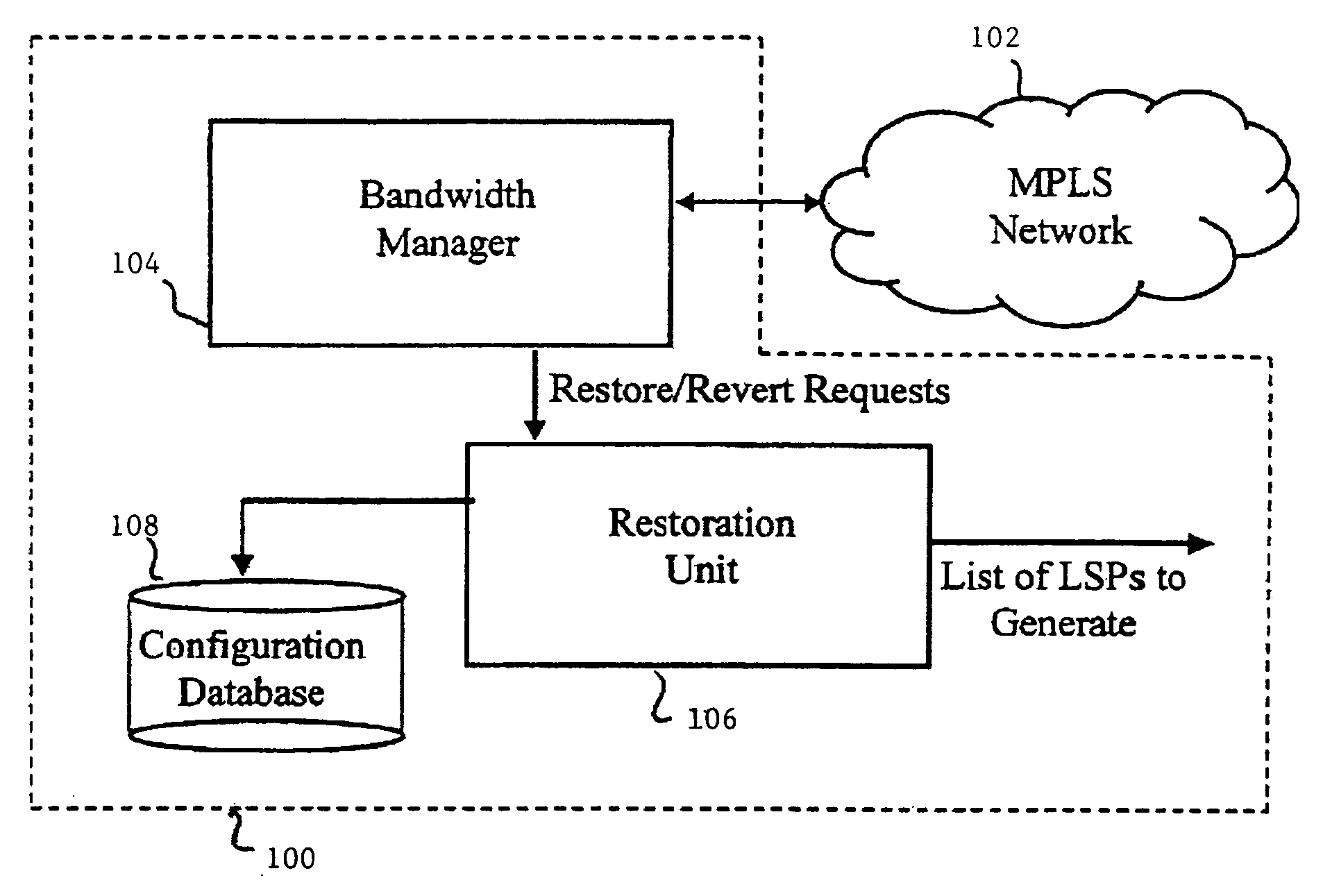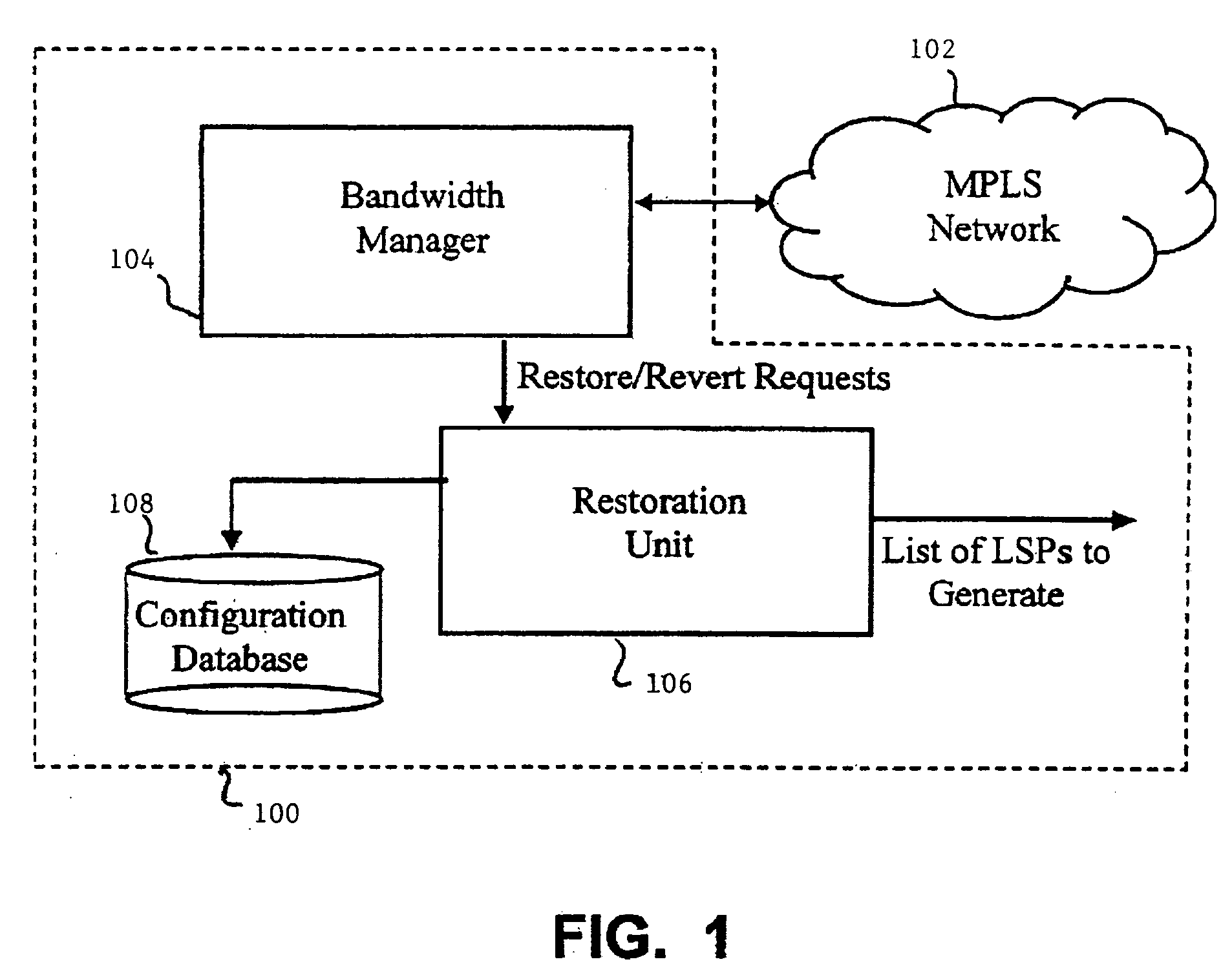Dynamic traffic rearrangement and restoration for MPLS networks with differentiated services capabilities
a technology of dynamic traffic and differentiated services, applied in the field of networks, can solve problems such as failure of primary lsp and its backup lsp, and recovery schemes that do not address such situations
- Summary
- Abstract
- Description
- Claims
- Application Information
AI Technical Summary
Benefits of technology
Problems solved by technology
Method used
Image
Examples
Embodiment Construction
[0066]FIG. 1 illustrates an example of the traffic engineering elements 100 used to carry out the operations of a system in accordance with an aspect of the present invention. The elements 100 interact with a network 102, such as a MPLS network having differentiated services (diffserv) capabilities. The traffic engineering elements are located, for example, in a network management system located at a network operation center and may include a bandwidth manager 104, a restoration unit 106 and configuration database 108. The bandwidth manager 104 controls the traffic passing through the network 102 and allocates bandwidth to the particular diffserv classes. The restoration unit 106 controls the substitution of replacement label-switched paths for existing LSPs when a failure occurs in one or more of the LSPs. The configuration database 108 stores the topology, the LSP data and the policies of the network 102. The bandwidth manager 104 and restoration unit 106 preferably comprise softw...
PUM
 Login to View More
Login to View More Abstract
Description
Claims
Application Information
 Login to View More
Login to View More - R&D
- Intellectual Property
- Life Sciences
- Materials
- Tech Scout
- Unparalleled Data Quality
- Higher Quality Content
- 60% Fewer Hallucinations
Browse by: Latest US Patents, China's latest patents, Technical Efficacy Thesaurus, Application Domain, Technology Topic, Popular Technical Reports.
© 2025 PatSnap. All rights reserved.Legal|Privacy policy|Modern Slavery Act Transparency Statement|Sitemap|About US| Contact US: help@patsnap.com



